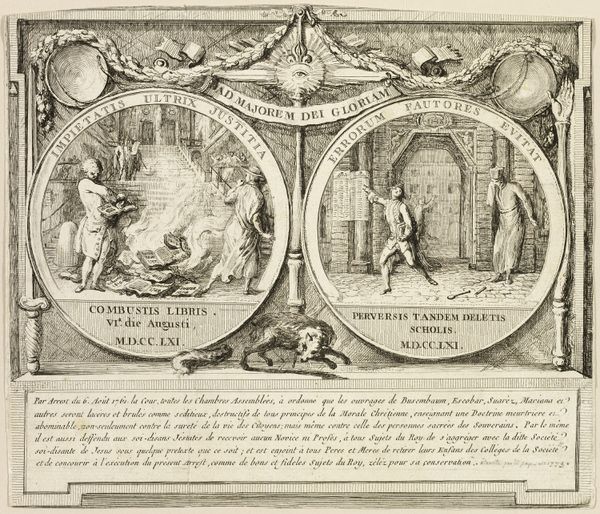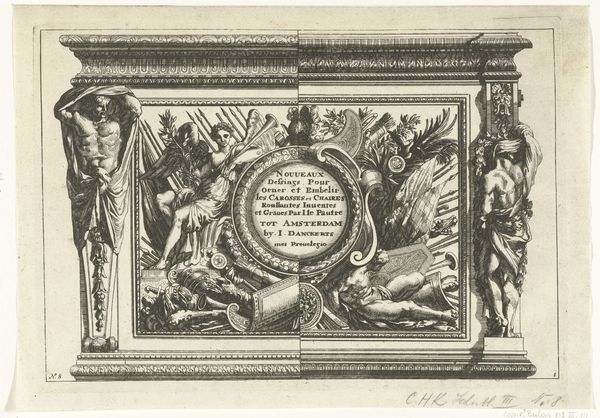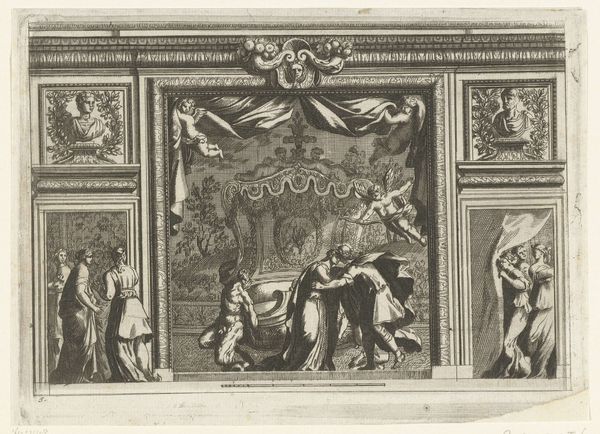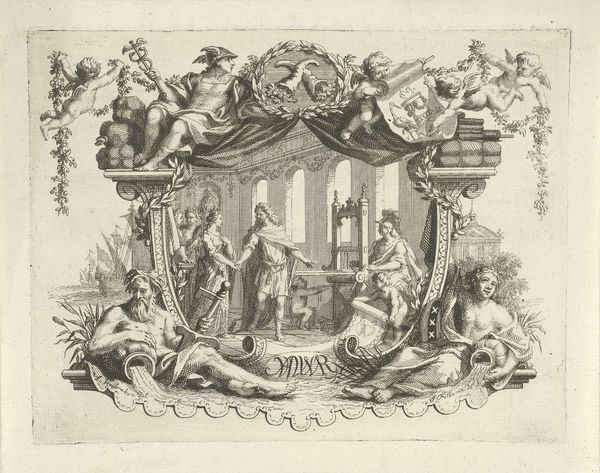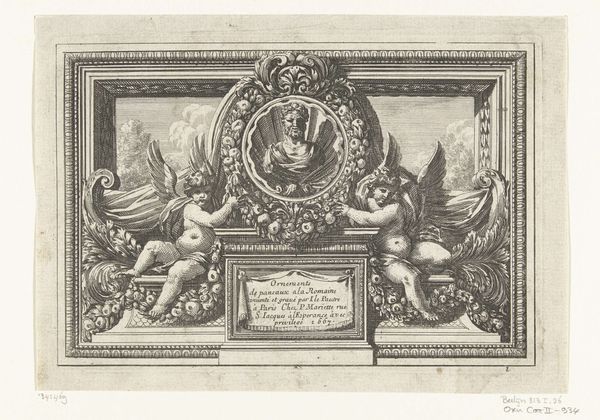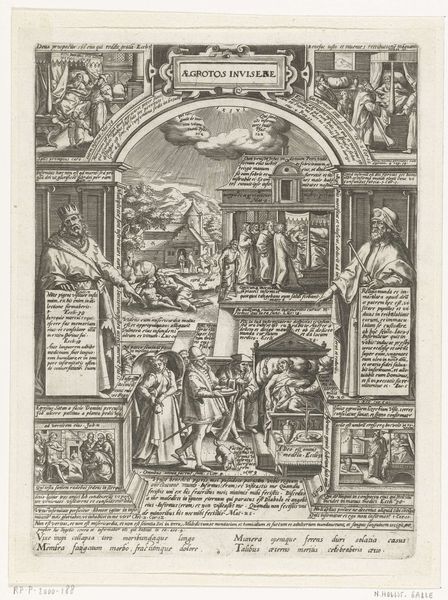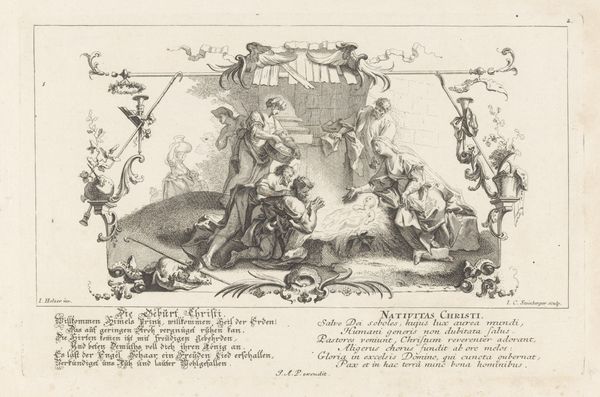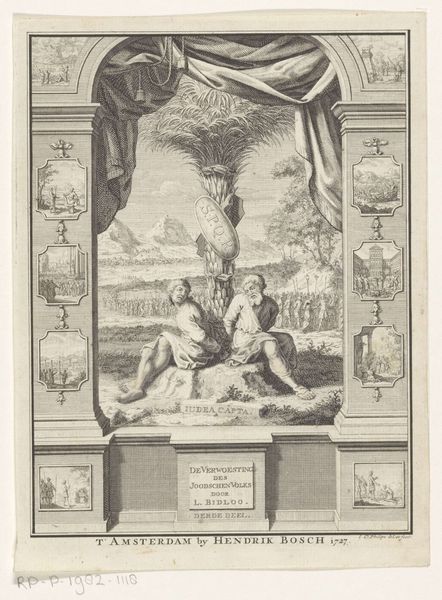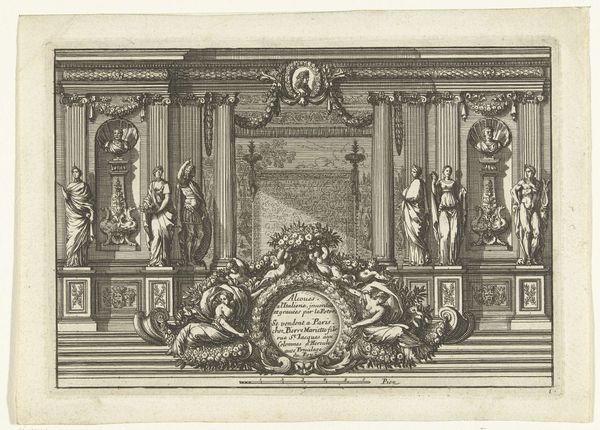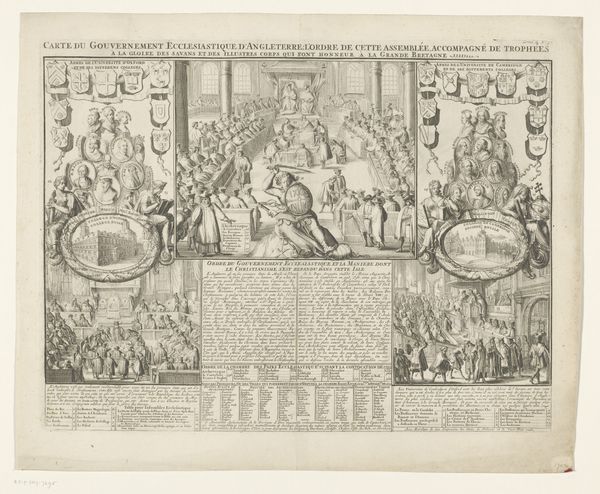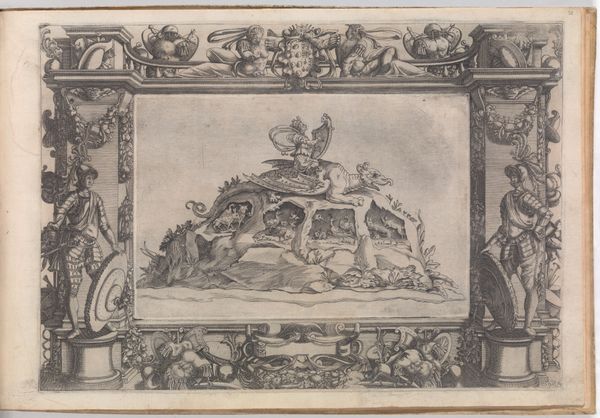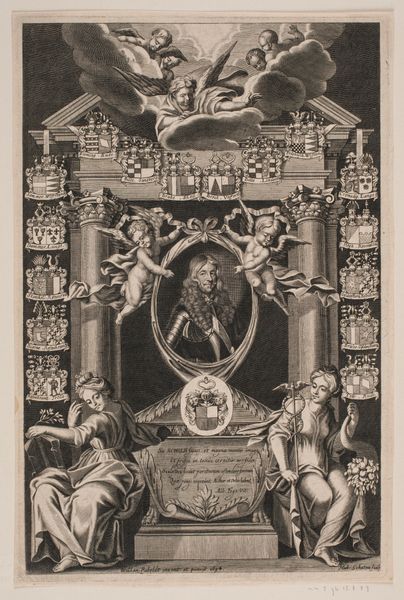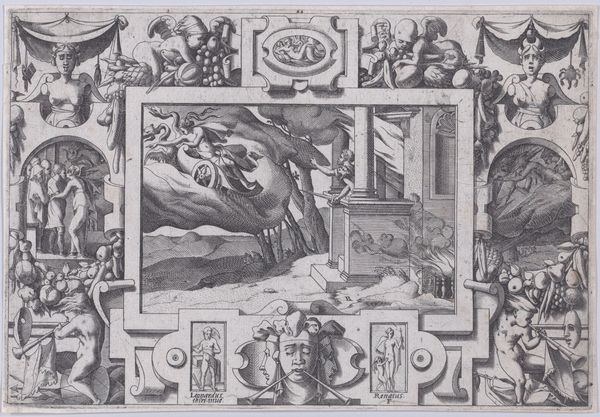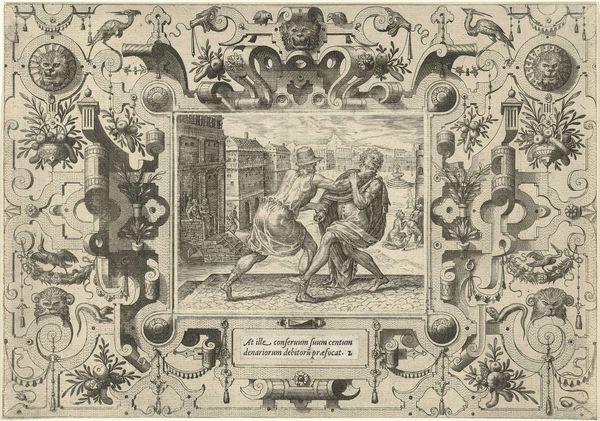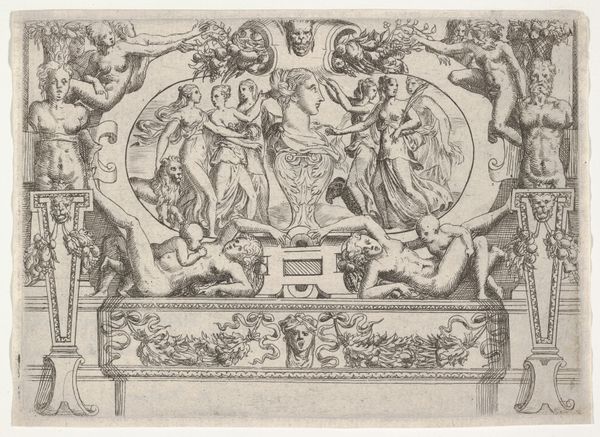
De begrafenisstoet van Frederik Hendrik (plaat nr. 30), 1647 1647 - 1651
0:00
0:00
pieternolpe
Rijksmuseum
print, engraving
#
baroque
# print
#
cityscape
#
history-painting
#
engraving
Dimensions: height 213 mm, width 540 mm
Copyright: Rijks Museum: Open Domain
Curator: What an extraordinarily detailed and rather poignant work. This print, entitled "The Funeral Procession of Frederik Hendrik," was created by Pieter Nolpe between 1647 and 1651. You can find it on display here at the Rijksmuseum. Editor: Immediately, I’m struck by the density of information. It’s a map, a diagram, and an allegory all rolled into one surprisingly somber tableau. All those meticulously etched lines create such a stark, almost brittle feeling. Curator: Brittle is a perfect descriptor! It's fascinating how Nolpe uses engraving to convey not only the historical record of the event but also the cultural and symbolic weight. Notice how the central panel depicts Frederik Hendrik being honored by allegorical figures. Editor: Yes, that central panel anchors everything. You’ve got the figure of Father Time, the winged figure proclaiming fame— classic iconography of mourning and remembrance. But even there, with the overt symbolism, there's that precise detailing, which keeps it grounded. What I find particularly compelling, though, are those diagrams of the carriages on either side. Curator: Precisely! Those almost feel like blueprints or technical drawings inserted into this grand historical scene. They serve not just to document the specifics of the procession, but maybe to suggest the weight and mechanism of power. This print blends historical record and allegorical symbolism seamlessly within this cityscape. Editor: It also says a lot about how they viewed history and power, doesn’t it? That urge to record, to document, to elevate a specific narrative…and the carriages as a measurement device as a demonstration of worth. I like how those symbols interweave. Each element contributes to the overall emotional tapestry. It is pretty magnificent as far as sorrowful celebrations go. Curator: Exactly, this artwork is more than just a depiction of a funeral. It's a meticulously crafted representation of power, legacy, and the art of remembrance in 17th-century Netherlands. And like all worthwhile art, I suppose it is there to spark and inspire a wide variety of insights into ourselves and our cultures. Editor: Right. The work reminds us that even the most carefully constructed images leave so much space for viewers to project their own meaning, their own sense of loss, into the past. That is how powerful this symbolic work is.
Comments
No comments
Be the first to comment and join the conversation on the ultimate creative platform.
